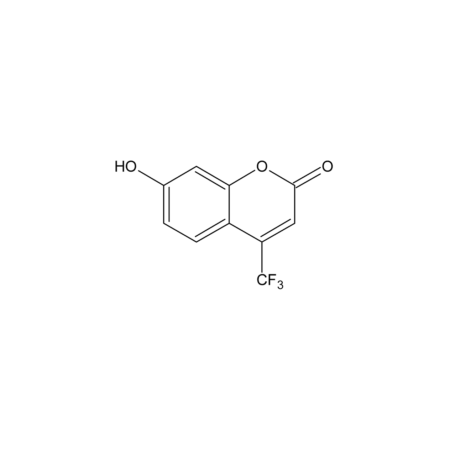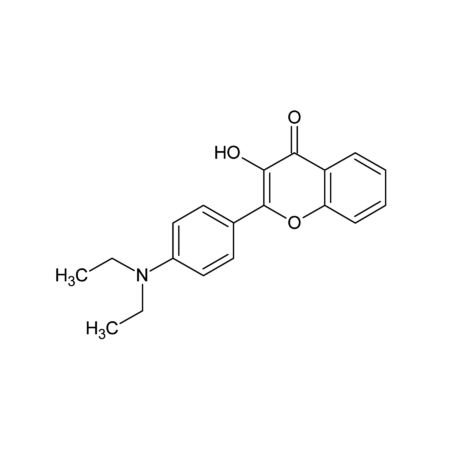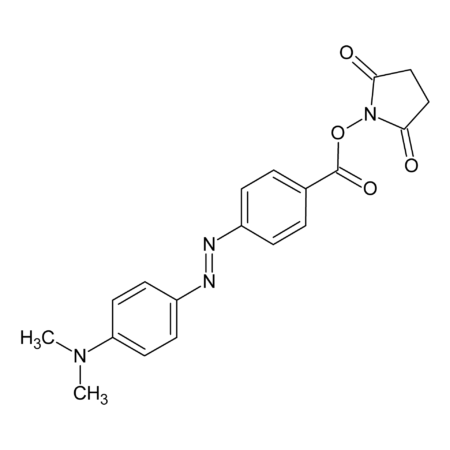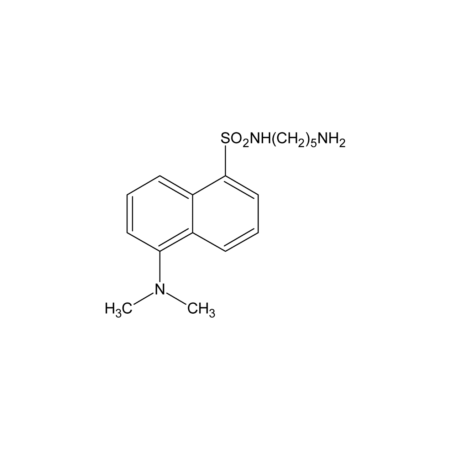TFMU
- SKU
- T0003
Category: Fluorescent Detection, Fluorescent Detection
- Synonyms
- 4-(Trifluoromethyl)umbelliferone
- 575-03-1
- CAS-Number
- C10H5F3O3
- Molecular Formula
- 230.14
- Molecular Weight
Specifications
- Purity
- ≥98% (NMR)
- Appearance
- White to off-white crystalline powder
- Identity
- 1H-NMR
Properties
- Solvents
- alcohols, DMSO or DMF
- Melting Point
- 178-180°C
- Fluorescence
- λex 355 nm, λem 498 nm in 0.1 M citrate pH 3.0
- Other
- pKa: 7.26
Downloads
- Safety Data Sheet
- CDX T0003 MSDS.pdf
- Shipping
- AMBIENT
- Short Term Storage
- +4°C
- Long Term Storage
- +4°C
- Handling Advice
- Protect from light and moisture.
- Use / Stability
- Stable for at least 2 years after receipt when stored at +4°C.
- Hazard statements
- H300, H315, H319, H335
- Precautionary statements
- P261, P264, P301 + P310, P305 + P351 + P338
- GHS Symbol
- GHS06
- Signal word
- Danger
- RIDADR
- UN2811 6.1
- Transportation
- Excepted Quantities
- Description
- This compound is widely used as a substrate for Cytochrome P450. It has also been used as a marker substrate for assessment of Drug-Drug interactions to multiple isoforms of UDP-glucuronosyltransferases. Suitable as pH-indicator. Trifluoromethylumbelliferone is a slightly longer wavelength analog of 4-methylcoumarin (4-MU) with a pKa that more closely matches physiological pH values.
- Smiles
- OC1=CC=C2C(OC(=O)C=C2C(F)(F)F)=C1
- InChi Key
- CCKWMCUOHJAVOL-UHFFFAOYSA-N
- References
- (1) P. Baranczewski: Assay and Drug Developm. Techn. 2(4), 345 (2004) , (2) A.B. Renwick: Xenobiotica 30(10), 955 (2000) , (3) G. Luyten et al.: J. Histochem. Cytochem. 33, 965 (1985)
- InChi
- InChI=1S/C10H5F3O3/c11-10(12,13)7-4-9(15)16-8-3-5(14)1-2-6(7)8/h1-4,14H
This compound is widely used as a substrate for Cytochrome P450. It has also been used as a marker substrate for assessment of Drug-Drug interactions to multiple isoforms of UDP-glucuronosyltransferases. Suitable as pH-indicator. Trifluoromethylumbelliferone is a slightly longer wavelength analog of 4-methylcoumarin (4-MU) with a pKa that more closely matches physiological pH values.



![7-Diethylamino-3-[N-(4-maleimidopropyl)carbamoyl]coumarin](https://www.chemodex.com/wp-content/uploads/2019/04/CDX-D0199-1-450x450.png)



